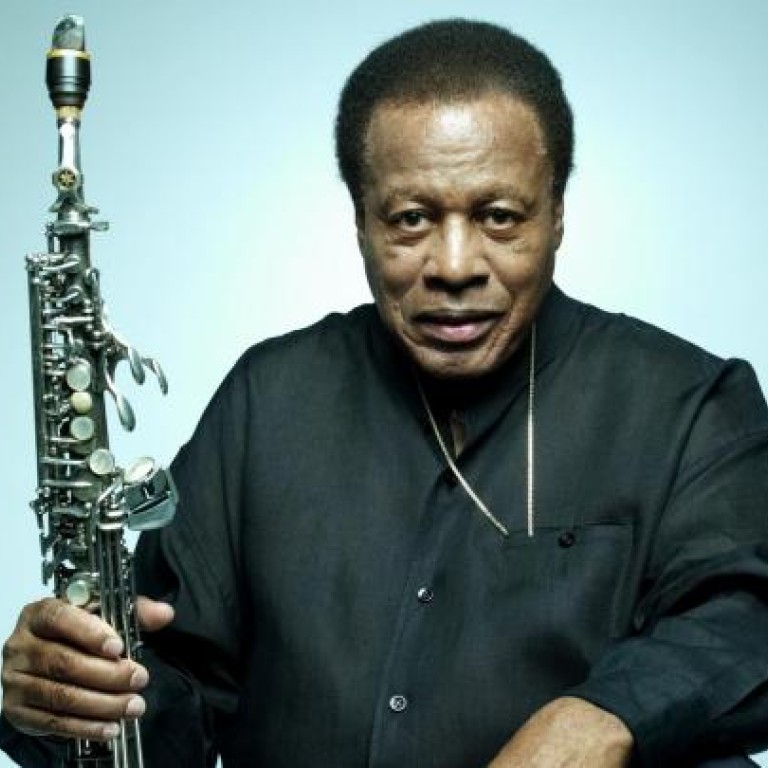
Blue Notes: Wayne Shorter
In the words of Blue Note Records president Don Was, Wayne Shorter is "one of the greatest musicians and composers of our time". There is not much room for argument with that.
In the words of Blue Note Records president Don Was, Wayne Shorter is "one of the greatest musicians and composers of our time". There is not much room for argument with that.
Was, himself better known as a musician and record producer, and now a little more than a year into his new role, was welcoming one of Blue Note's most distinguished alumni back into the fold after an absence of more than four decades.
For the past 18 years, Shorter's albums as a leader have come out on another iconic jazz label, Verve, but as both Verve and Blue Note are part of the Universal Music Group, his change of address isn't that radical.
"At age 80 we witness him at the height of his powers and performing with one of the most incredible bands he's ever assembled," Was says. "Although welcoming him back to Blue Note Records after 43 years is a romantic notion, Wayne's enduring appeal is rooted in his steadfast refusal to trade in such nostalgia. In fact, it is Shorter's determination to constantly move forward that makes his new album, , such an essential listening experience."
Well, up to a point. Shorter will be 79 until August 25, and while Was is right to say he has no truck with nostalgia, it's also true his return to Blue Note will focus some welcome nostalgic attention on the label's golden era, which may help generate sales for CDs in its reissue programme.
In the early 1960s, before the high standards set by Blue Note founder Alfred Lion were commercially compromised, the label was recording groundbreaking jazz on a regular basis, some of which eventually achieved classic status. Shorter appeared on quite a few of those records - not just his own, but on albums by Art Blakey, Freddie Hubbard, Lee Morgan, Donald Byrd, Tony Williams, Lou Donaldson and McCoy Tyner.
Shorter might have returned contractually, but musically he long ago moved on. The 11 records he made for Blue Note between 1964 and 1970 reflect a continuous restless progression, leading up to the formation of Weather Report, the band he co-led with Joe Zawinul from 1971 to 1985. The only concessions to nostalgia to be found in are brief musical quotations from Dizzy Gillespie's , Sonny Rollins' , and Shorter's own , a piece he recorded for the 1965 Blue Note release .
is the third album since 2002 from the Wayne Shorter Quartet, comprising Shorter on tenor and soprano saxophones, Danilo Perez on piano, Brian Blade on drums, and John Patitucci on bass. I'm not counting 2003's , on which Brad Mehldau and Terri Lyne Carrington stood in for Perez and Blade on certain tracks.
All three albums - in 2002 for Verve, in 2005, and - were recorded live and, as the title for this one suggests, metaphorically without a safety net. No two performances of any one piece are ever alike.
comprises eight recordings from different concerts on the quartet's 2011 European tour and one - the 23-minute centrepiece - from a concert in Los Angeles, which features the four jazz musicians interacting with wind quintet the Imani Winds. The one piece not composed by Shorter is , a 1933 movie tune originally sung by Fred Astaire. first appeared on Miles Davis' in 1967, while was first recorded for Weather Report's 1983 album. Both pieces are radically transformed, and the rest of the music is entirely new.
This is a warts-and-all recording, with crowd interjections clearly audible; but it captures much of the excitement of this extraordinary small group's improvisations, which often border on free jazz. The freedom, however, exists within a highly disciplined compositional framework, as is clear from the intricate but dynamic interaction with the string quintet on . The playing is exploratory, but never sounds lost.
About to enter his ninth decade, Shorter is leading one of the finest small groups of improvising musicians in the world. And as Don Was says, he is still looking forward.
Shorter's three most influential recordings for Blue Note.
-
The influence of Shorter's mentor, John Coltrane, is apparent in both his playing and his choice of personnel on his fifth album, and second for Blue Note.
-
By the time the follow-up to JuJu was recorded, Shorter had settled into a regular gig with Miles Davis' Second Great Quintet, and is joined here by bandmates Ron Carter on bass and Herbie Hancock on piano.
Shorter's seventh album for Blue Note features the first recording of his most famous composition, Footprints, which became a standard through extensive exposure with the Davis Quintet.

